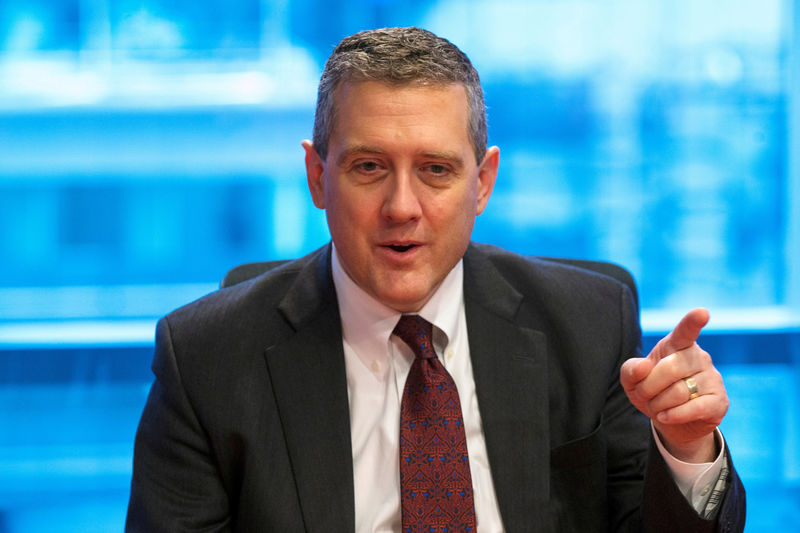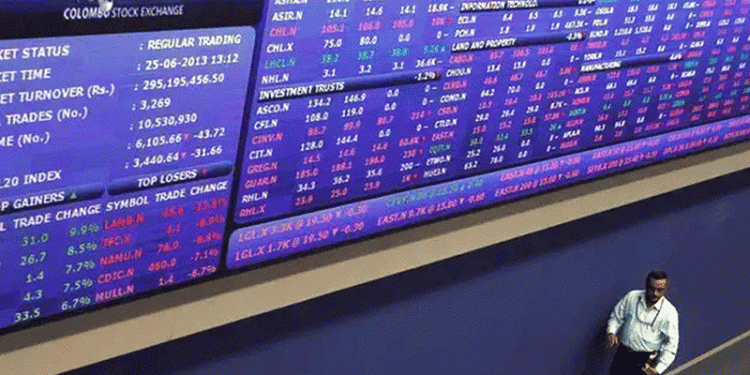 © Reuters. FILE PHOTO: St. Louis Fed President James Bullard speaks about the U.S. economy during an interview in New York
© Reuters. FILE PHOTO: St. Louis Fed President James Bullard speaks about the U.S. economy during an interview in New YorkBy Ann Saphir and Howard Schneider
JACKSON HOLE, Wyo. (Reuters) – St. Louis Federal Reserve Bank President James Bullard on Friday raised new alarm bells over the U.S. central bank’s plan to keep raising interest rates, warning that even one more rate hike could set the stage for recession.
Bullard, who spoke to Reuters on the sidelines of a conference here for global central bankers and economists, said the yield curve on U.S. Treasuries suggests investors see slower growth after this year and no danger of inflation ahead.
Earlier in the day, Fed Chair Jerome Powell gave a talk signaling more interest-rate hikes are ahead, and the yield curve reached its flattest since before the financial crisis.
Part of Powell’s rationale for raising rates is that with unemployment at 3.9 percent, inflation will not stay low forever, so rates need to rise somewhat.
“The thing is, we would be deliberately inverting the yield curve, because we think our models are right and we think the market’s wrong,” Bullard said. “We don’t have to do that, we don’t have to walk the plank in this situation because inflation is not high, inflation expectations are not exploding.
“We can afford to wait and see and inflation does start to move up, well, we can move up,” he added.
An inverted yield curve, when short-term borrowing costs rise above long-term ones, has preceded nearly every U.S. recession in recent memory.
After Powell’s remarks, traders narrowed the gap between two-year and 10-year Treasuries
That is less than the 25 basis points by which the Fed is expected to raise its benchmark short-term rate in September and again in December.
Asked if a rate hike at the Fed’s next policy meeting in September could invert the yield curve, Bullard said, “That’s a possibility, maybe, depending on how hawkish it was read by the market. But probably not that early, it’s probably something like late this year, or next year.”
Bullard first publicly raised a red flag over the yield curve last year on Dec. 1. At that time the gap between the two-year and 10-year was 58 basis points.
Since then the Fed has raised rates three times, and the gap has narrowed as longer-term rates have not risen in tandem with short-term rates.
Markets are pricing in two more rate hikes this year, and one next year, less than the three rate hikes the Fed currently forecasts for 2019. Policymakers will release fresh forecasts for future rate hikes at its September rate-setting meeting.
Fusion Media or anyone involved with Fusion Media will not accept any liability for loss or damage as a result of reliance on the information including data, quotes, charts and buy/sell signals contained within this website. Please be fully informed regarding the risks and costs associated with trading the financial markets, it is one of the riskiest investment forms possible.
Source: Investing.com



























